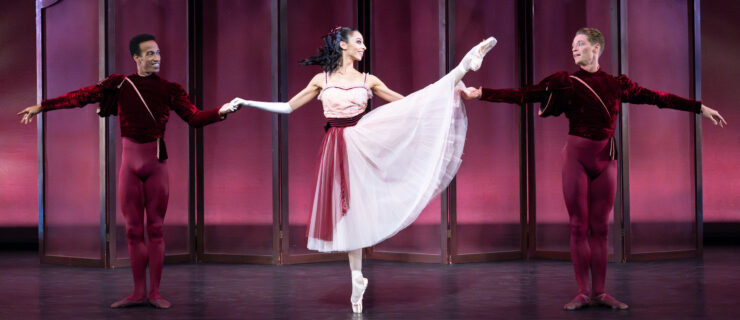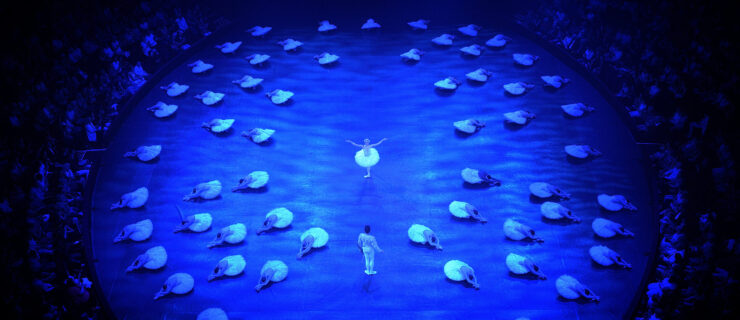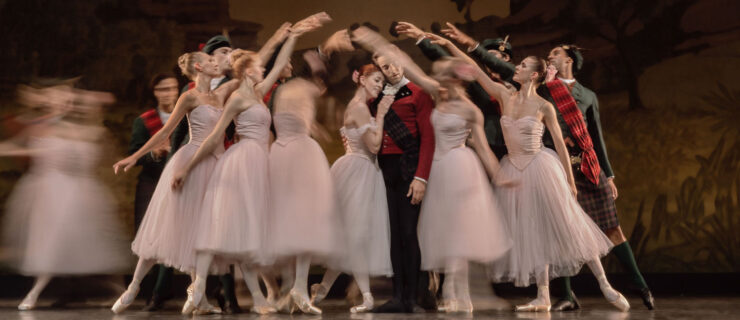Real Life Dance: Eat To Dance
With so much information on nutrition out there, deciding on what constitutes a healthy diet can be a little confusing, especially for dancers who need to consume enough food to fuel a day of dancing.
The effect of too little nourishment can become evident early in the day, says Marie Elena Scioscia, a Manhattan nutritionist and former dancer. Energy drops, mood starts to plummet and the ability to make decisions diminishes. “Injury prevention goes right out the window,” she says. “The brain and nervous system need a constant supply of energy from blood sugar—which can only come from food. The body will start to break down even over the course of the day.”
Long-term results are even more grim, Scioscia warns. “When dancers consistently undereat over the course of their careers, they set themselves up for muscle loss, impaired immunity, thyroid disorder and other hormonal disorders.” She recommends sticking to a well-balanced diet of protein, carbohydrates and good-quality fats.
With that in mind, we asked four dancers to tell us what they ate in a day of rehearsing and performing. (Our thanks to the dancers for recording their meals for our readers.) We looked at how each dancer approaches diet. Then, without meeting the dancers and knowing only their heights and weights, Scioscia evaluated the diets and made suggestions that dancers at all levels can use.
SAMUEL POTT
American Repertory Ballet
Age: 28
Breakfast
1 shot espresso
1 large bowl raisin bran cereal with banana
1 fried egg on 1 slice toast with butter
Lunch
2 sandwiches: turkey, swiss, mayo, lettuce
1 yogurt
1 apple
1 grapefruit
Snack
1 large coffee
1 chocolate-chip cookie
Dinner
Tofu with broccoli, soy sauce
Rice
Samuel Pott works at maintaining his weight. “I eat a lot,” says Samuel. But “sometimes I have to drink a protein drink at the end of the day to not lose weight.” That’s when he whips up a 700-calorie concoction he buys at a vitamin shop. He also tries to eat a lot of protein at breakfast, to make his energy last, and avoids fast food and junk food like potato chips, high in saturated fat. A splurge? Coffee and a chocolate-chip cookie.
Samuel would do well to consume his special protein drink every day. He’s not eating enough, Scioscia says. He needs approximately 3,000 calories to maintain his energy and body composition, not 2,028. His diet was a little low on dairy, very low on other proteins and low on vegetables. “I would suggest bringing some yogurt to rehearsals, or for a snack, having a protein bar or peanut butter sandwich rather than a cookie. At lunch, I would add a side salad or some vegetable soup.”
RACHEL HOLMES
Joffrey Ballet School
Age: 19
Breakfast
1 pumpernickel bagel, toasted with butter
1 Naked “Immunity” juice drink
Snack
1 banana
1 pear
Lunch
2 slices of turkey breast on a roll with lettuce, pickle, mustard and 1 slice of American cheese
Dinner
1 cup pasta with broccoli florets
1 cranberry almond muffin
1 15-ounce can of iced coffee
An active ballet student, Rachel Holmes leaves home at 8 am, takes five hours of classes, and then rehearses with a modern company or works a night job before she returns home at midnight. Rachel often eats on the go but doesn’t skip meals. “I don’t think I could,” she says. “If I had more time, I’d probably eat more, especially at lunch.”
Rachel needs approximately 2,300 calories to maintain her weight; her diet shows only about 1,893 calories. In choosing refined starches like a bagel and muffin, which each weigh about 8 ounces, she consumed 15 bread servings, where the average should be 8 to 10. In addition to eating more whole grains, Scioscia advises Rachel to consume at least 5 servings of vegetables a day and increase her protein to 110 grams.
She also missed out on the recommended 1,200 milligrams of calcium. “Dancers should shoot for at least 2 to 3 dairy servings from low-fat sources like skim milk or yogurt. Fortified soy milk is also a good choice, as soy is good for bones.”
SAVANNAH LOWERY
New York City Ballet
Age: 20
Breakfast
Light yogurt, orange juice, coffee
Lunch
Chicken salad
Snack
Almonds
Dinner
Soup, chicken, crackers, orange
NYCB corps de ballet member (and part-time college student) Savannah Lowery is the first to admit her seven-shows-a-week schedule can be “pretty grueling.” Fitting in nutrition is difficult, so she tries to pack in her nutrition during days off. On a recent day when her mom was visiting, she ate three meals: eggs, chicken and salad, and spaghetti. She also occasionally indulges in M&Ms.
Scioscia says Savannah needs approximately 2,200 calories every day, not the 1,421 shown here. “She is an athlete, and so it is very important for her long-term career that she consume enough each day.”
A protein-heavy diet can also lead to sugar cravings. Eating a healthy mix of protein, good-quality fats and carbs will help her feel full. Carbohydrates like oatmeal, sweet potatoes and brown rice give athletes the fuel that is needed to drive muscular endurance and strength, Scioscia explains.“Without carbohydrates, muscle must be broken down for fuel—not good for dancers or anyone long-term.”
MELISSA MORRISSEY
Fugate/Bahiri Ballet NY
Age: 29
Breakfast
2 pieces of toast with peanut butter and jelly
1 glass of chocolate soy milk
Snacks
Luna bar, dried fruit or nuts
Lunch
Sandwich with cheese, avocado and tomato
Dinner
Sautéed vegetables with tofu
“I feel really strongly about eating three meals a day,” says Melissa Morrissey. With six hours of rehearsal a day, she’s also the one with the Luna bars, dried fruit and nuts in her bag. “I need that snack to keep my energy up,” she adds.
Melissa likes to read up on nutrition, but admits, “There are so many things out there it’s hard to know what to believe. I try to listen to my body.” Paying attention doesn’t mean she doesn’t treat herself. “I will eat dessert sometimes,” she says.
Melissa needs at least 1,600 calories a day. Her diet turned out to be about 1,439 calories. Her carbohydrate intake was on the low side, but adequate. She also consumed too little calcium, fruits, vegetables and protein. “Without adequate protein,” Scioscia warns, “it is impossible to maintain muscle and keep the immune system going.” Melissa, who doesn’t eat red meat, chicken or pork, could eat more fish or try a protein shake for an afternoon snack or before performing.
Susan Chitwood, a former apprentice with Virginia Ballet Theater, has an MS in journalism from Columbia University in New York City.





